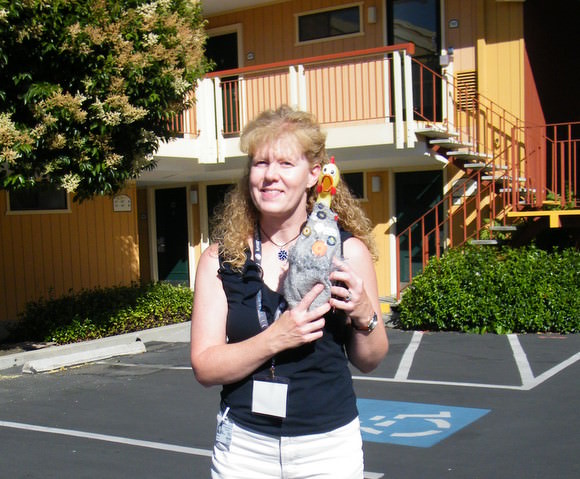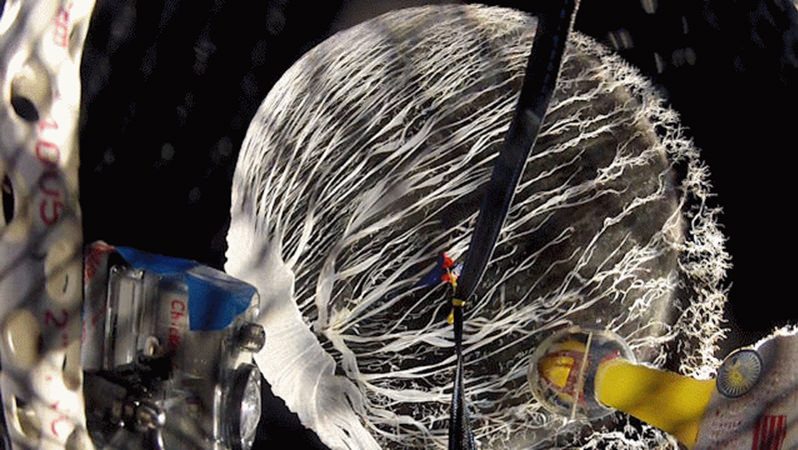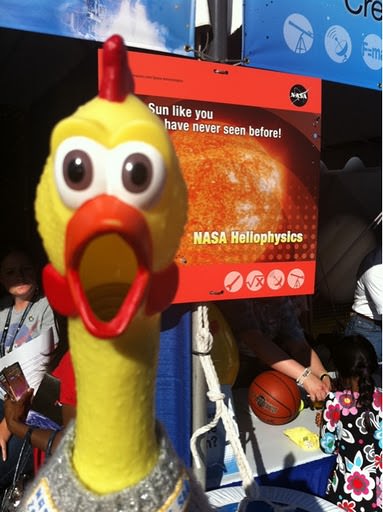We at Universe Today really appreciate the work that Camilla the Rubber Chicken does in her role of education and public outreach. This new video from NASA explains why many people agree that she puts a completely different spin on getting people interested in space and science. As Camilla once told us, “As you know, I not only want to educate about our Sun and space weather, but I want to inspire and show kids (and adults) how much fun science and engineering really is,” she said via email. “Team SDO’s goal has always been to encourage more girls into STEM careers,” … and to make people feel comfortable asking questions, too.
Chaos and Education at 120,000 feet for Camilla the Rubber Chicken
[/caption]
In my travels, I’ve had the pleasure of regularly meeting up with Camilla the Rubber Chicken, the social media maven and mascot for NASA’s Solar Dynamics Observatory. But lately I’ve been seeing here virtually everywhere — on television, splashed across all sorts of websites, and even in my local newspaper. What Camilla does is try to capture the imagination of students and get them interested in space and science. With her latest adventures she’s done just that, and now captured the attention of people all around the world, too.
What did she do? She flew to the stratosphere — about 36,000 meters (120,000 ft) up — on a helium balloon right into the throes of one of the most intense solar radiation storms since 2003.
“I am still glowing,” Camilla joked.
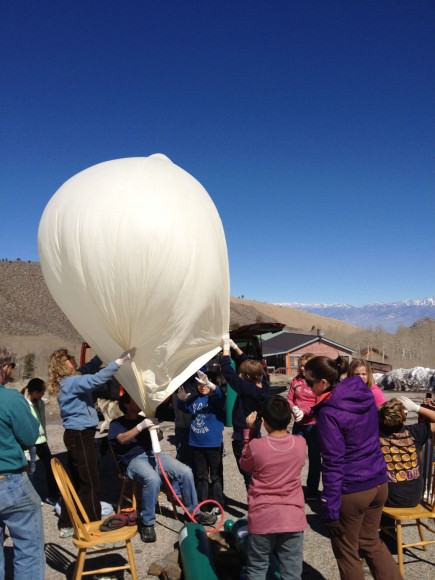
Students from Bishop Union High School’s Earth to Sky group spearheaded the flights, as Camilla actually flew twice — once on March 3 before the radiation storm and again on March 10 while the storm was in full swing. This would give the students a basis for comparison of the radiation environment.
On board with Camilla was a payload of four cameras, a cryogenic thermometer two GPS trackers, radiation detectors, Seven insects and two-dozen sunflower seeds (fittingly, the variety known as “Sunspot” — Helianthus annuus) all inside a modified department store lunchbox.
“We equipped Camilla with sensors to measure the radiation,” says Sam Johnson, 16, of Bishop Union High School’s Earth to Sky student group. “At the apex of our flight, the payload was above 99 percent of Earth’s atmosphere.”
Camilla made it back in one piece, but unfortunately, the insects died.
“This story is really about STEM (science, technology, engineering and math) and about these kids from Bishop, California who have worked really hard in developing the mission, planning it, and then executing it,” Camilla told Universe Today. “They had to overcome set-backs, review their processes, come up with better solutions and implement them. For them it was a great hands-on learning experience and they are and can be proud of their accomplishments.”
NASA knows that these kinds of programs, where kids can get involved in hands-on research, are very important for introducing and keeping students interested in STEM subjects, important areas of study for future NASA scientists and engineers.
“As you know, I not only want to educate about our Sun and space weather, but I want to inspire and show kids (and adults) how much fun science and engineering really is,” Camilla said via email. “Team SDO’s goal has always been to encourage more girls into STEM careers and seeing that this team had several girls on the team was just the most rewarding.”
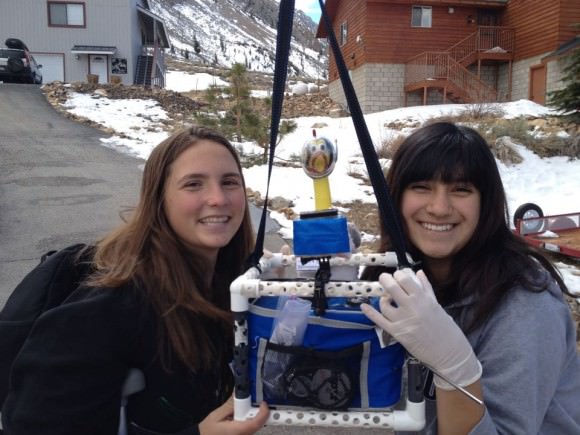
The video of the balloon popping and part of Camilla’s flight:
During the two-and-a-half-hour flights, Camilla spent approximately 90 minutes in the stratosphere where temperatures ( -40 to -60 C, -40 to -76 F) and air pressures (1 percent sea level) are akin to those on the planet Mars. The balloon popped, as planned, at an altitude of about 40 km (25 miles) and Camilla parachuted safely back to Earth. The entire payload was recovered intact from a landing site in the Inyo Mountains.
The fifth grade students who assisted with the flight have planted the sunflower seeds to see if radiated seeds produce flowers any different from seeds that stayed behind on Earth. They also pinned the corpses of the insects to a black “Foamboard of Death,” a rare collection of bugs that have been to the edge of space.
Meanwhile, Camilla’s radiation badges have been sent to a commercial laboratory for analysis.
The students say they are looking forward to the data and perhaps sending Camilla back for more.
“I truly believe that text books will always be around,” Camilla said, “but real-life hands-on projects like these are wonderful, and will become more popular.”
Here’s a video of an X-class flare from sunspot AR1429, which unleashed more than 50 solar flares during the first two weeks of March:
Read more about Camilla’s adventures, or our previous article, How a Rubber Chicken is Spreading the Word About NASA’s Space Missions and Science.
How a Rubber Chicken is Spreading the Word about NASA, Space Missions and Science
[/caption]
Here’s a headline you don’t see too often: “Rubber Chicken Turned NASA Mission Mascot Embarks on a Flight to Space.” Seriously, this is a true story. If you’ve not heard of Camilla Corona, or Camilla SDO as she is sometimes called, you probably haven’t been paying attention to one of the most exciting current space missions, the Solar Dynamics Observatory. Camilla is virtually everywhere in the world of social media, and she travels around the country – and the planet – spreading the word about what’s going on with our Sun and how SDO is helping us learn more about it. As mission mascot, she is leading the way – and setting the bar pretty high for other NASA missions to follow – about how to get the public interested in space and science.
“People ask, ‘what does a rubber chicken have to do with a science mission?’ but as long as we get people’s attention, we can then divert it to what SDO does,” said Romeo Durscher, Camilla’s PR assistant and ‘bodyguard.’ “However, we didn’t know it would go this far when we started this.”
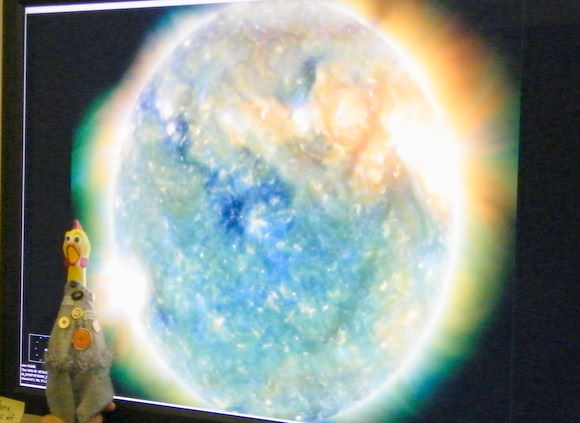
The story of Camilla goes back to the early days of SDO at Goddard Space Flight Center, when mission scientist Barbara Thompson introduced Camilla as something funny for the science team.
“Barbara was very persistent – she brought little Camillas and rubber chickens to all the science meetings to lighten up the room,” Durscher said.” The question always is, ‘why Camilla?’ and the official answer is because she is the same color as the sun. Over the years, Camilla has just become more and more integrated into the education and public outreach side of the mission.”
“Camilla started as an inter-office joke and soon became the mascot for the science side of the mission,” said Aleya Van Doren, the formal education lead for SDO. “It is not uncommon for someone who has been working on SDO for awhile to receive a rubber chicken as sort of a ‘you’ve earned your keep’ award. She’s a great moral booster for the science team, as well as being a wonderful ‘hook’ to get the public interested in the mission.”
Van Doren said the fun part is bringing Camila to public events or classrooms. “She is a great conversation starter with kids, especially with elementary children. Our main focus is getting the science out to the public, so whatever means we can use to draw in people’s interest and see the amazing things that SDO is doing, we consider it worthwhile.”
I’ve personally seen children — as well as adults — literally melt when meeting Camilla and get very excited about interacting with her.
As far as the public side of things, Van Doren said they are pleasantly surprised at the amount of attention her social media channels on Twitter and Facebook have been bringing to the mission.
“Romeo does a great job bringing her around to various places. Her schedule is quite full for a chicken. I would be really tired if I was that busy,” Van Doren said.
Which begs the question: just how many Camillas are there?
“That is a guarded secret,” Van Doren said, “but there is really only one official Camilla. We are very careful to make sure she is only in one place at a time. But sometimes airfare gets expensive, so she’ll have a body double in one place. Jet-setting around the country can sometimes be difficult.”
Durscher is the keeper of what is now the official Camilla, but confirmed that she does indeed have some body doubles. At first, it was easy to have Camilla be in several places at once. That was before she started wearing clothes.
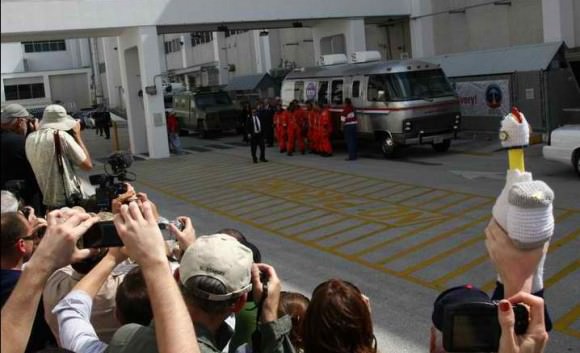
“Our rubber chicken had the SDO mission pin on her left side, and that was Camilla,” Durscher said. “We had one at Goddard, one at Stanford University, and another at our education office, so there were several Camillas, and we had the story that she was travelling here and there, but now it gets a little more complicated.”
Cynthia Butcher, a fan of Camilla, knits specially made outfits for a rubber chicken, including a spacesuit, a Star Trek uniform, an “I Dream of Jeannie” outfit, and many more.
“Cynthia is a wonderful person, one of the first followers of Camilla on Twitter and Facebook,” Durscher said. “She really enjoyed what Camilla was doing, and said that Camilla should have a flight suit and that she would make her one. When we got the outfits, we were thrilled. But now we have to have a storyline for why we sometimes we might see Camilla without any clothes on – maybe the suit will be in the dry cleaning, or something.”
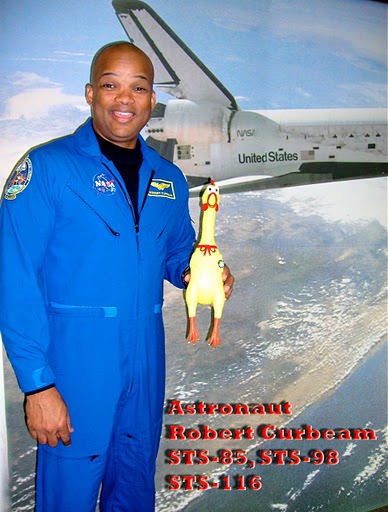
Camilla has met astronauts, trained at Johnson Space Center, attended World Space Week in Nigeria and a science fair in Malaysia, been on hand at many NASA Tweet-ups and launches, and even given a speech at the Smithsonain Ignite event at the Smithsonian Museum – well, actually Durscher ended up speaking for her, as Camilla lost her voice shouting at all the animals in the Washington DC Zoo the day before.
But Camilla’s main goal is to educate, inspire (especially to inspire girls to go into science and engineering) to build community and have fun — as well as bringing the beautiful, stunning and wonderful images and data from SDO into the classroom.
“We have lots of things teachers can use to educate their students about the Sun — hands-on experiments, beautiful images — and students can have the opportunity interact with mission scientists,” Durscher said.
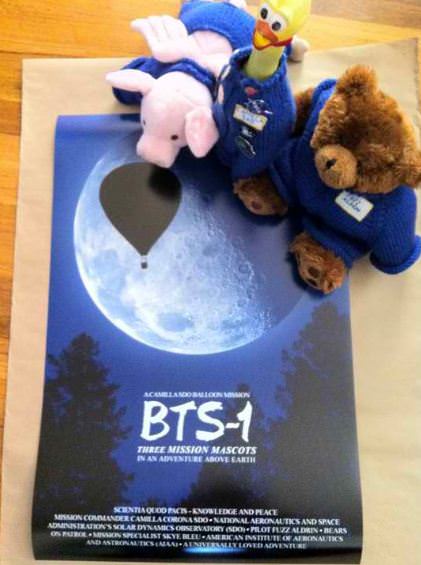
But now Camilla embarks on what might be her greatest adventure ever. She is actually going to space. Camilla will be going to the edge of space in a weather balloon with a camera for the Camilla Space Weather Project.
“We are using that launch as the hook for new program we are doing to get the public interested in space weather forecasts,” said Van Doren.
Space weather refers to conditions on the Sun and in the solar wind that impact Earth’s atmosphere and can influence space and ground based technology and even human health.
“We have a page of a series of questions that people can go through to make a prediction of whether a space weather event is going to take place – such as the bright flares SDO has observed recently, and if those events will affect Earth, such as auroras being visible, or if it could cause any problems with satellites or related technology,” said Van Doren.
Launch is currently scheduled for this weekend, May 8 from the University of Houston central campus. Launch preparations begin at 10 AM, and will be webcast on UStream.
“We want to make sure that when Camilla launches it will be safe, so we’ve been having people make a space weather forecast and see whether or not it will be good conditions for launching to the upper atmosphere. Of course we don’t want Camilla to be bombarded with radiation, so classrooms have been making recommendations if this will be a good time to go or not,” Van Doren said.
Durscher said that as of Friday, the mission was go.
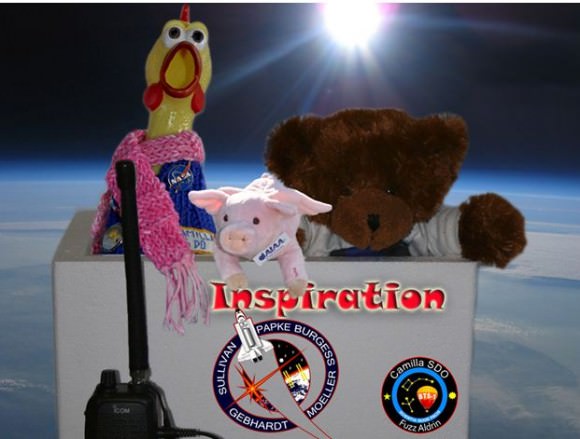
Camilla is not going to space alone. She’s traveling with Fuzz Aldrin from “Bears on Patrol” which provides US police officers with free teddy bears to use in cases involving small children, as well as a stuffed pig, Skye Bleu, the STEM (science technology engineering and math) outreach mascot for the American Institute of Aeronautics and Astronnautics (AIAA) and a patch to represent Smokey Bear.
“Our goal is to inspire the next generation of engineers, scientists and explorers,” Durscher said, “and we’ll make sure that Camilla and her crew will come back alive.”
Let’s hope so. Camilla has lots more work to do spreading the word about NASA, space and science.
